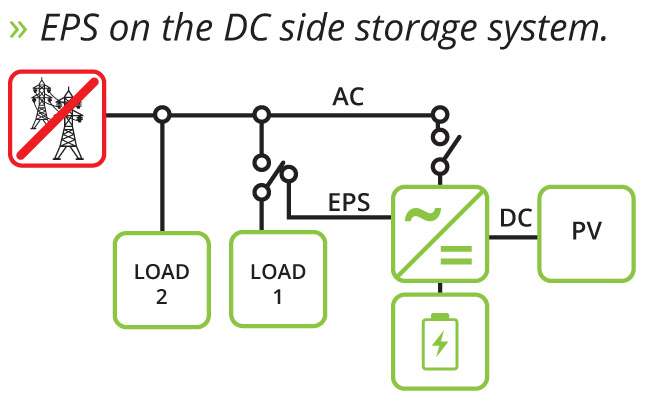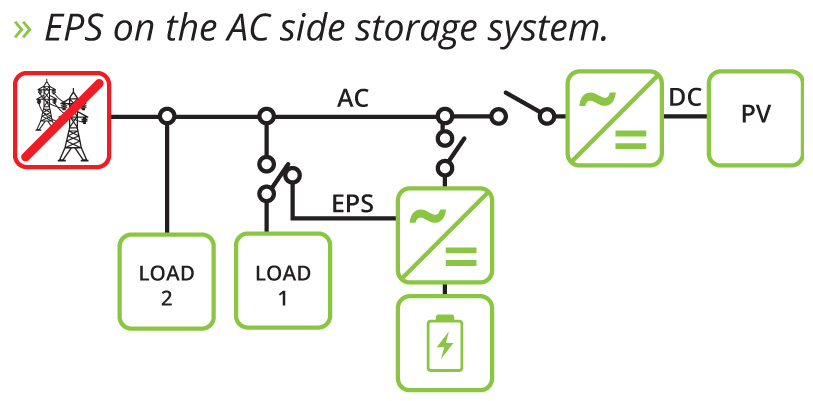A very frequent question concerning storage systems combined with photovoltaic systems is their capacity to supply energy in the event of a power failure.
In reality, all the devices connected to the network should automatically disconnect from the network, in the case of a power failure.
An emotional fact or a real need?
This is due to the fact that, if they remain connected, dangerous and uncontrolled voltages could be generated in the distributor’s network; this could generate a potential danger for the technicians who, in that moment, should operate in the network itself.
Backup in storage
In some cases, it is possible to manage the release from the network and the shift to an isolated system without interrupting the supply of power. In other cases, inverters of storage systems include a second AC output, called EPS (Emergency Power Supply) which, completely disconnected from the electricity network, can feed power using the energy from the battery (or directly that produced by photovoltaic panels).
» EPS in a storage system.
As can be seen from the diagrams that follow, when the network’s power is disabled, the inverters are disconnected from the grid and the EPS function comes into play. It grants power to the “privileged” loads in total safety.
EPS is not an UPS
EPS does not have the same function as UPS (Uninterruptible Power Supply). UPS charges constantly the battery the battery, keeping it “ready to use”.
If the power grid suddenly interrupts, no discontinuity in power supply occurs.
On the other hand, this does not happen with EPS, which has a switching of around 10ms, necessary to cause a shutdown of power loads and therefore restart becomes necessary.
Hybrid photovoltaic inverters
Hybrid photovoltaic inverters manage both the energy produced by the photovoltaic modules and the one exchanged with the battery. Those with the integrated EPS function can work disconnected from the grid.







